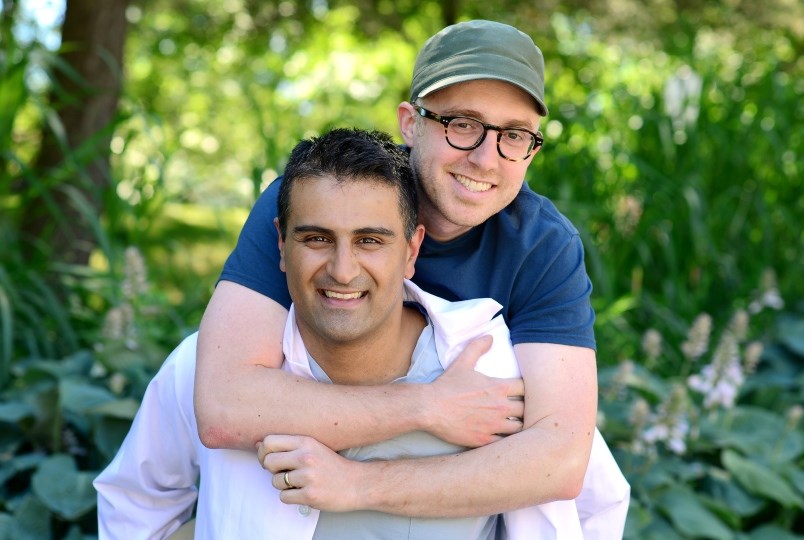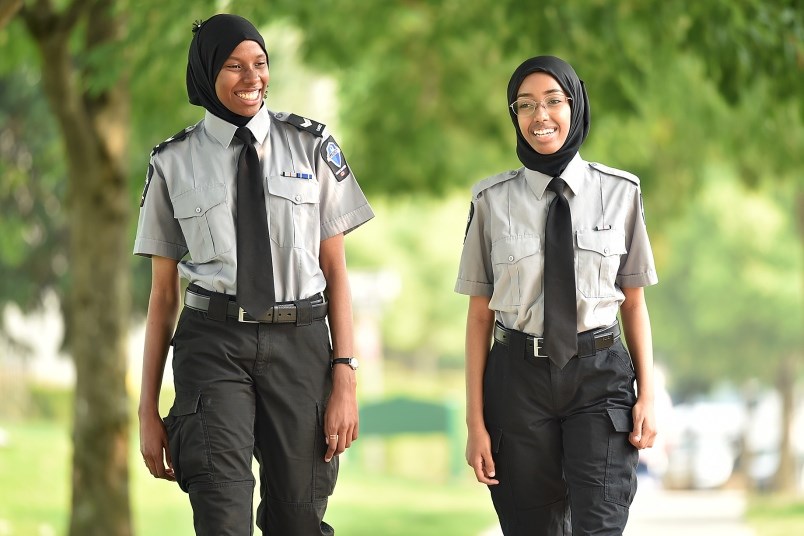Contrary to what some readers may think, I’m not all about the doom and gloom.
But from where I sit, Vancouver is no longer that easygoing/affordable/less congested city I remember as a kid.
So I tend to write about what’s wrong with it, not what’s right with it.
In fact, as I write this sentence, there’s a woman in the alley outside our office clearly down on her luck. According to our office coordinator, who went and spoke to her, she just had her bike stolen from outside the nearby shelter, where she is staying.
There’s more to her story, but that’s for another time.
I want to close out the year with some good news by looking back on two stories I wrote and a video I shot about people who might have inspired you. If they didn’t, you should go see your doc, get your pulse checked and give the stories another read.
The video below is only two minutes long.
Much, I’m sure, to the chagrin of the listicle-loving crowd, I’m not going to produce a top-10 list here.
Instead, I’ve narrowed it down to nine people.
‘Trailblazers’
I’ll begin with Aminah Ibrahim, 17, and her friend Samira Sallow, 15. They are members of the Vancouver Police Department’s cadet program. I met them at a Vancouver Police Board meeting earlier this year and then sat down with them in the summer at a park.
What I heard, what I observed and what I learned from these teens was featured in a story the Courier published in August. It was also posted on our website. And judging by the 800 likes on Facebook and several re-tweets and emails received, the story resonated.
Why?
They are the first Muslim girls to join cadets. The story was also published around the time of the white supremacist mayhem in Charlottesville, Virginia and an anti-racism rally outside Vancouver city hall.
The girls, however, had no intention of making a statement about their religion or culture or international affairs in joining cadets. Truth is, they liked cop shows and wanted to learn more about policing.
But Muslim leaders and the police department saw their participation differently.
As I wrote in my story, Haroon Khan, a trustee at the Al Jamia mosque on West Eighth Avenue, said it was a proud moment for him when he heard the girls speak at the police board meeting. He was inspired, he said, by their resilience to stand up for theirreligion and proudly wear their Islamic attire, despite being targets of hate.
“They’re role models for other young girls, and for the whole community — and that’s a terrific thing,” Khan said. “It’s inspiring to see them doing what they do. They have our unconditional support and we look forward to hearing great things about them in the future.”
Insp. Howard Tran, who oversees the cadet program: “They are trailblazers. We don’t have a lot of Muslim women in policing, especially ones that are wearing hijabs. I know nothing would make the chief prouder than the day we hire the first woman with a hijab.”
Ibrham and Sallow have taken the praise in stride, but they’ve also realized they’re breaking down barriers and likely influenced other Muslim kids to join the program.
Ibrahim: “When I first started, I thought I just wanted to be a cadet. Now it’s like…”
Sallow finished her friend’s thought: “…it’s like we’re an ally to the Muslim community, if not our own families. We’re not perfect Muslims…”
Ibrahim: “…we’re not perfect anything, but if we influence people to do good things, then I’ll be happy.”

Saving Michael Severloh
Now to Michael Severloh, Dr. Mypinder Sekhon and Henry Ostermann…
Here’s their story, in brief: Severloh, 31, ran a stop sign on his bike, collided with Ostermann’s Mazda 3, and Sekhon and his team in the intensive care unit at Vancouver General Hospital saved Severloh’s life.
The story had several layers. First, there was the crash at Fourth Avenue and Cypress Street that gave Severloh a severe head injury. Second was Sekhon and his team using new technology to begin Severloh on a long road to recovery where, in July, he was cognitively 90 per cent better and physically about 80 per cent.
Here’s what kind of shape Severloh was in when Sekhon first saw him on May 1, 2016:
“It was pretty apparent right away, on his neurological examination plus the CT scan, that he suffered a really, really severe injury — the type of injury where the brain is shaken back and forth and rotated, and all the little nerves and the blood vessels are torn to shreds. There’s not one big bleed but more like countless, small, little bleeds everywhere.”
What helped keep Severloh from ending up in a vegetative state, or dying, is the new technology that Severloh referred to as “the brain bolt.” The hospital has become a leader outside Europe in the use of “multimodal neuromonitoring” — a procedure where two catheters the thickness of a blade of grass are inserted into the brain’s cerebrum to monitor the overall pressure in a person’s skull and the precise amount of oxygen in the brain.
The technology allowed doctors to determine the dose of medication required to increase blood flow to the brain. In Severloh’s case, doctors were surprised to learn they could push his heart harder and pump more blood to the brain.
How Ostermann fits in here is that Severloh arranged to meet with him and apologize for running the stop sign. The two met at a Starbucks. Ostermann said he was glad Severloh made the effort to track him down.
“It was a very nice touching thing,” he said. “My wife said it gave her goose bumps. Like — wow, it was like it came full circle. We talked about it a lot, and wondered how he was. I said to her many times that I wanted to go down to the hospital and kind of stick my nose in there, but I was told not to.”
As I wrote in the story, both men said meeting each other brought closure to a horrible day in their lives. It also sparked a friendship after Ostermann, a metal fabrication teacher, learned Severloh was an industrial design student.
“I told him that once he has a design or something that needs metal work, I can get my students to build it,” he said. “That would spawn a story in itself.”
‘Diminishing fear’ in Marpole
I shot some video earlier this month of Churchill secondary students organizing a “welcoming rally” for the new modular housing to be built at 57th Avenue and Heather Street for homeless people.
As regular readers know, I’ve written a few stories about this issue and heard from Marpole residents opposed to having a 78-unit complex in their neighbourhood. I also shot video of them, which was posted on our website.
But I hear from adults all the time.
It was refreshing to hear from some articulate teenagers about an issue they will likely be reading about, hearing about or continue doing something about when they become adults. Their names are Zainab Sayedain, Ishman Bhuiyan, Helen Colliander and Naia Lee.
Sayedain: “I think it’s OK to be scared and it’s OK to be nervous, but we also need to be supportive and have empathy for those who are moving in. This is not an opportunity for us to hate on any groups. We’re all in this together and we can abolish the fears together.”
Bhuiyan: “We’ve witnessed some of the other protests going on with chanting, with negativity and we just wanted to have a positive atmosphere with food, with signs that weren’t negative in any way and just smiles.”
Colliander: “Integration, I think, is the best way to diminish fear in our community, and so having these people around daily and interacting with them and seeing everything that they can contribute and the wonderful things that they have to share, as well, I think that will help diminish fear.”
Lee: “Especially, I think, having students involved in the process, as well, is going to teach kids that homeless people aren’t people to be afraid of, and that they’re humans just like us. And that way, when students grow up, they’re going to be able to deal with issues like homelessness better.”
Thank you
Want to close here by saying thanks for reading this year.
And thanks for your emails, your re-tweets, your shares and news tips.
Look for my snarky “best of/worst of/etc.” for 2017 in my next entry.
Should have it posted sometime next week.
Until then, all the best during the holiday season.
@Howellings



